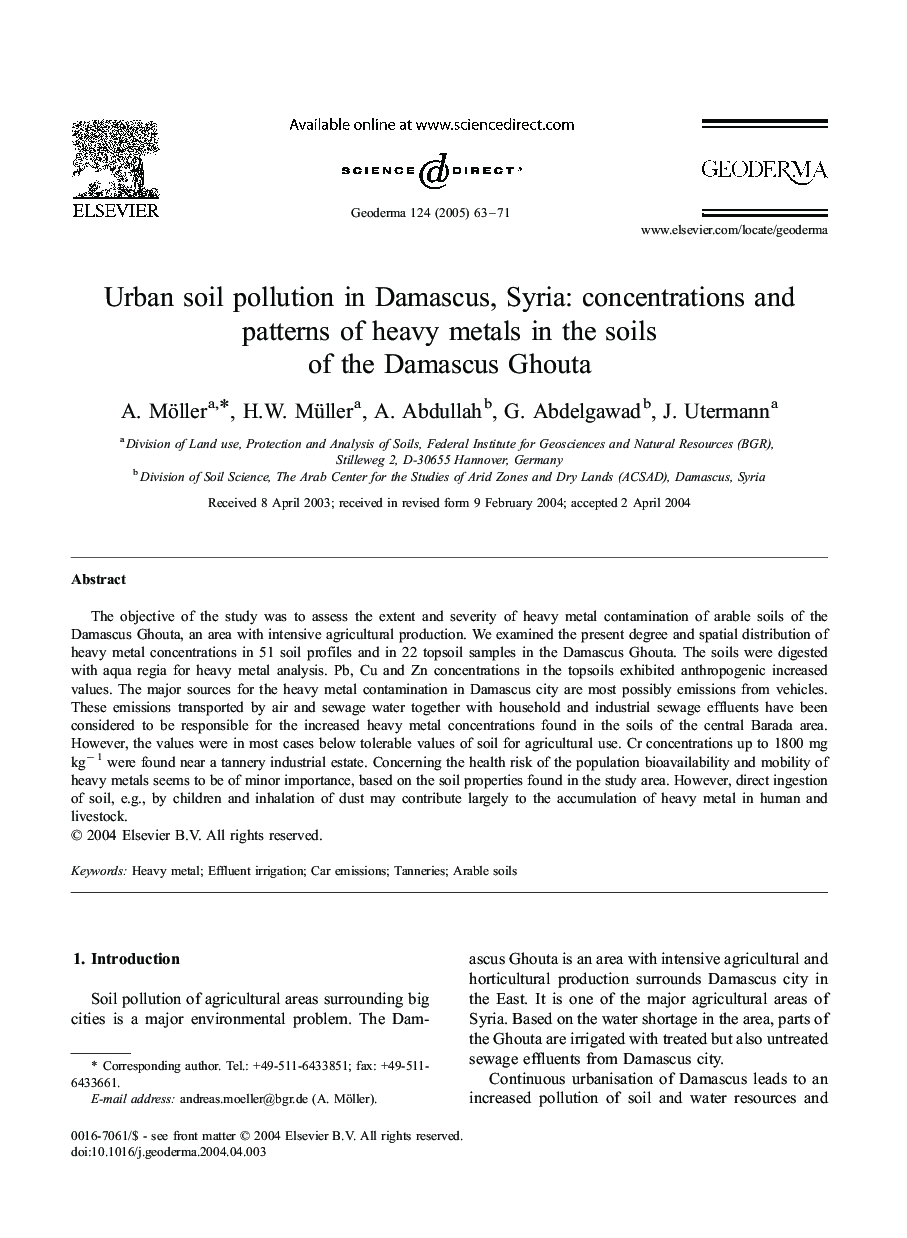| Article ID | Journal | Published Year | Pages | File Type |
|---|---|---|---|---|
| 9490663 | Geoderma | 2005 | 9 Pages |
Abstract
The objective of the study was to assess the extent and severity of heavy metal contamination of arable soils of the Damascus Ghouta, an area with intensive agricultural production. We examined the present degree and spatial distribution of heavy metal concentrations in 51 soil profiles and in 22 topsoil samples in the Damascus Ghouta. The soils were digested with aqua regia for heavy metal analysis. Pb, Cu and Zn concentrations in the topsoils exhibited anthropogenic increased values. The major sources for the heavy metal contamination in Damascus city are most possibly emissions from vehicles. These emissions transported by air and sewage water together with household and industrial sewage effluents have been considered to be responsible for the increased heavy metal concentrations found in the soils of the central Barada area. However, the values were in most cases below tolerable values of soil for agricultural use. Cr concentrations up to 1800 mg kgâ1 were found near a tannery industrial estate. Concerning the health risk of the population bioavailability and mobility of heavy metals seems to be of minor importance, based on the soil properties found in the study area. However, direct ingestion of soil, e.g., by children and inhalation of dust may contribute largely to the accumulation of heavy metal in human and livestock.
Related Topics
Physical Sciences and Engineering
Earth and Planetary Sciences
Earth-Surface Processes
Authors
A. Möller, H.W. Müller, A. Abdullah, G. Abdelgawad, J. Utermann,
